Welcome to Old School Month on Eternal Central. We’re looking at a different Old School 93-94 deck each day of the month. Today’s deck is Grixis, named for playing Blue-Black-Red (Grixis) colors, in an aggro-control shell. Here is a recent version I played locally in Chicago.
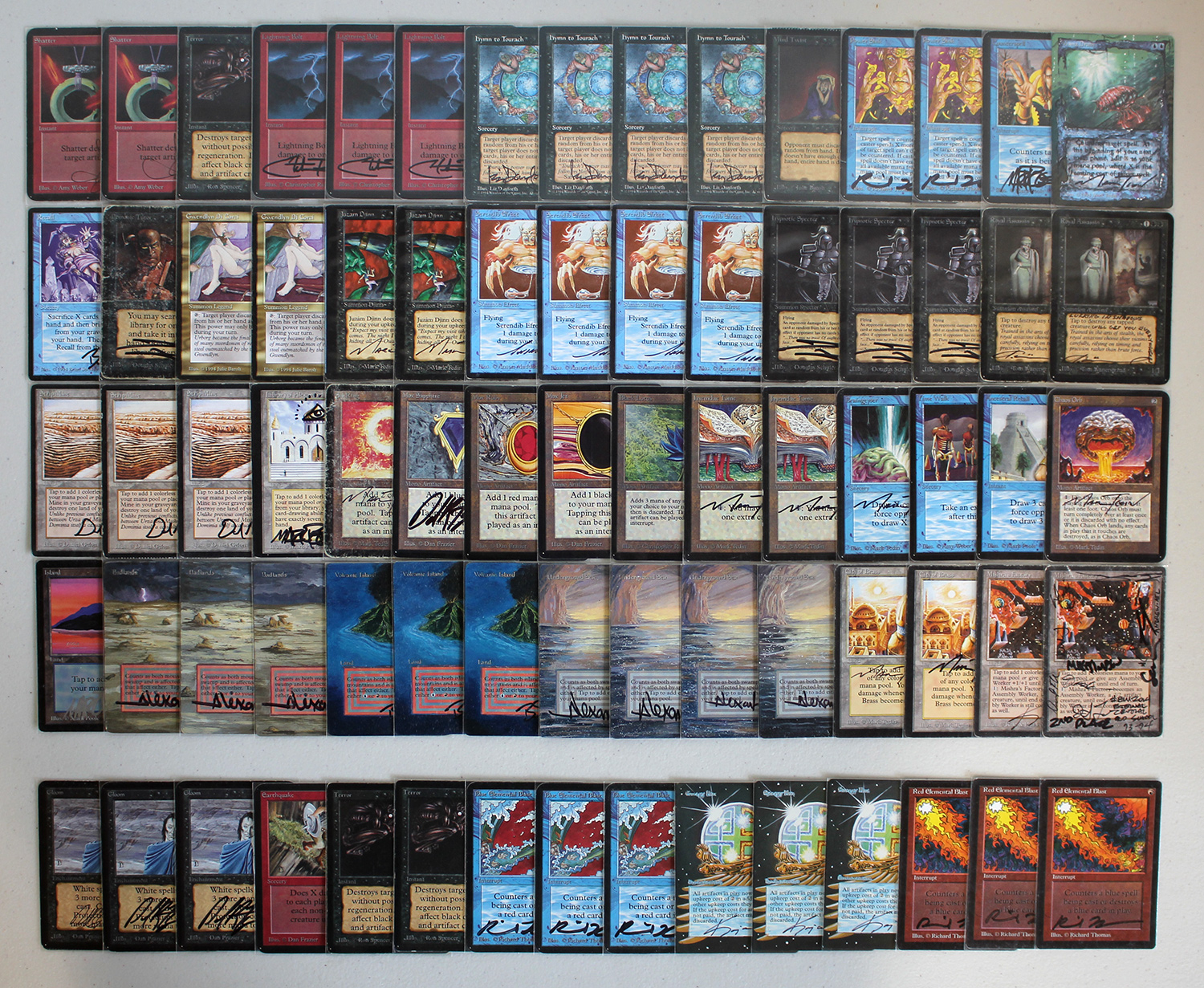
Constructing Grixis Control
It is probably more appropriate to call this particular configuration of Grixis aggro-control. There are a decent number of creatures, removal, and some control elements. That is really all you need in this version. You can experiment with playing fewer kill conditions, for example, which would free up space for more control elements, but in this build we’re trying to kill opponent at a faster pace, in order to give them fewer turns (and fewer outs as a result).
Creature Choices
The problem with a number of the cheaper black and red creatures is that they die to Lightning Bolt. Hypnotic Specter is a prime example of this, but its disruptive abilities are usually worth it. Likewise, Royal Assassin is probably overcosted for what it does, but it can help kill other creatures, changes combat math, and has sick art.
Serendib Efreet is the most efficient threat that this color combination has to offer, and is a natural inclusion. It doesn’t die to Lightning Bolt, but is susceptible to Red Elemental Blast, so you can always try to limit your exposure to this against certain decks with how you sideboard.
Juzam Djinn has the sickest art in the game, and at 5/5 for only 4 mana, is very reasonably costed. I like somewhere between 2-4 copies in these decks as a finisher, even though it lacks any other disruptive ability.
Gwendlyn Di Corci is an underutilized Legend that not only survives Lightning Bolt, but can also make the opponent discard at random each turn. I like 1-2 copies in here instead of the last copy of Hypnotic Specter, because it can block bigger creatures in combat, and doesn’t need to do combat damage to make the opponent discard.
Draw Engines
Blue provides access to the standard Ancestral Recall, Time Walk, and Braingeyser package.
Jayemdae Tome is a natural inclusion, but can often be sideboarded out if you think the opponent will have loads of artifact removal, which can then become somewhat dead after sideboarding. Likewise, if you’re bringing in Energy Flux out of the board this is a consideration for cutting, to make Flux even more one-sided.
Wheel of Fortune and Timetwister are great in burn-heavy variations of Grixis, but in this version with Hymn to Tourach they don’t make the cut. Giving your opponent a fresh hand after you’ve ground them out of resources is illogical.
Constructing a Mana Base
Your dual land and basic land configuration will come down to how many of each color you want access to, skewing towards how many spells you have that require double (black, or blue) mana in their casting cost. This is tricky, and one of the reasons you probably don’t see more decks that contain both Hymn to Tourach and Counterspell.
Strip Mine is great to have access to for temporary disruption and to deal with Mishra’s Factory. I like 2-3 in here, because like Mishra’s Factory and Library of Alexandria, it’s a colorless land that doesn’t produce critical colored mana.
Similarly, I’m only playing on-color Moxen in this build, because having access to on-color mana is much more critical than having an early off-color accelerant.
Designing the Sideboard
Gloom is where most black sideboards begin, and for good reason. White has the most efficient removal spells in the game, and if that efficiency can be significantly stunted this gives us more time to attack and to force our opponent to discard their spells with all of our hand disruption.
There is less creature removal in this main deck than in many Old School decks, but this is easily remedied. Chain Lightning, Psionic Blast, Terror, Paralyze, and Earthquake are among the best options to bring in.
Enemy artifacts often need to be addressed in 93-94, and you have options like Shatter, Shatterstorm, Detonate, Artifact Blast, and Energy Flux. In burn-heavy builds I really like Detonate, as it’s yet another source of direct damage. Haunting Wind is another unique option for consideration in very aggressive burn-heavy builds. In this particular version we’ve got a couple of Shatters main deck, and are reliant on multiple copies of Energy Flux out of the sideboard against artifact-heavy decks. When used in conjunction with all of your other disruption Energy Flux will often be a one-sided blowout.
Blue Elemental Blast and Red Elemental Blast round out the sideboard, and each address a host of particular threats that Red and Blue present, from Blood Moon to Counterspell.
Playing Grixis Control
Playing this deck is fairly straightforward. You make your opponent discard their hand, blow up their permanents, and attack with efficient creatures. Gwendlyn Di Corci, Hypnotic Specter, and Royal Assassin each provide additional benefits. Most of your removal is instant speed, which works nicely with holding up countermagic. You can be more reflexive to the opponent, especially if you have landed an early or mid-game creature threat.
Ten Opening Hands with Grixis Control
Here are ten randomly drawn opening hands with the deck (in order, and not manipulated in any way), and a few brief words with how I might look to play said opening hands.
Opening Hand 1
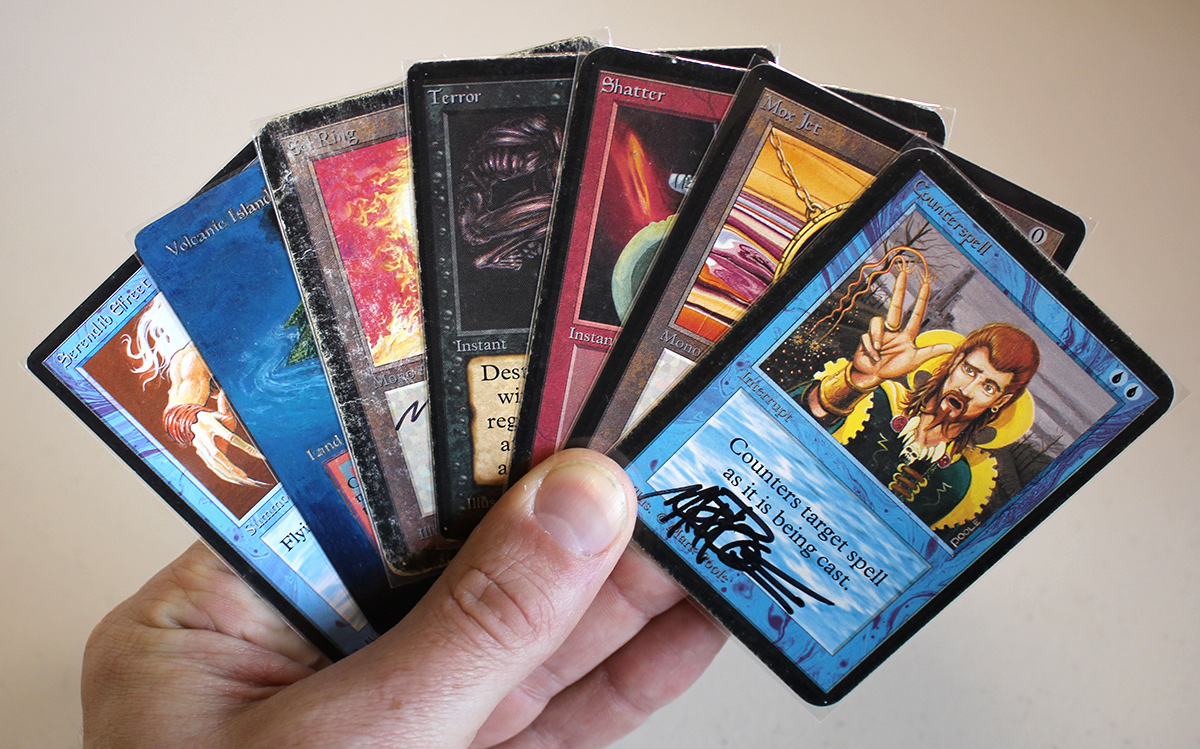
This hand can play a first turn Serendib Efreet, and then untap and follow up with Shatter and/or Terror on the next turn, or Counterspell if a blue mana source is drawn. This is an easy keep.
Opening Hand 2

The presence of Mox Jet makes this otherwise sketchy hand a keep. We can lead off with Strip Mine, and if we hit a black mana source at any point in the early game we are off to the races with Hymn to Tourachs on back to back turns. Serendib Efreet and Jayemdae Tome will serve as threats to follow up with.
Opening Hand 3
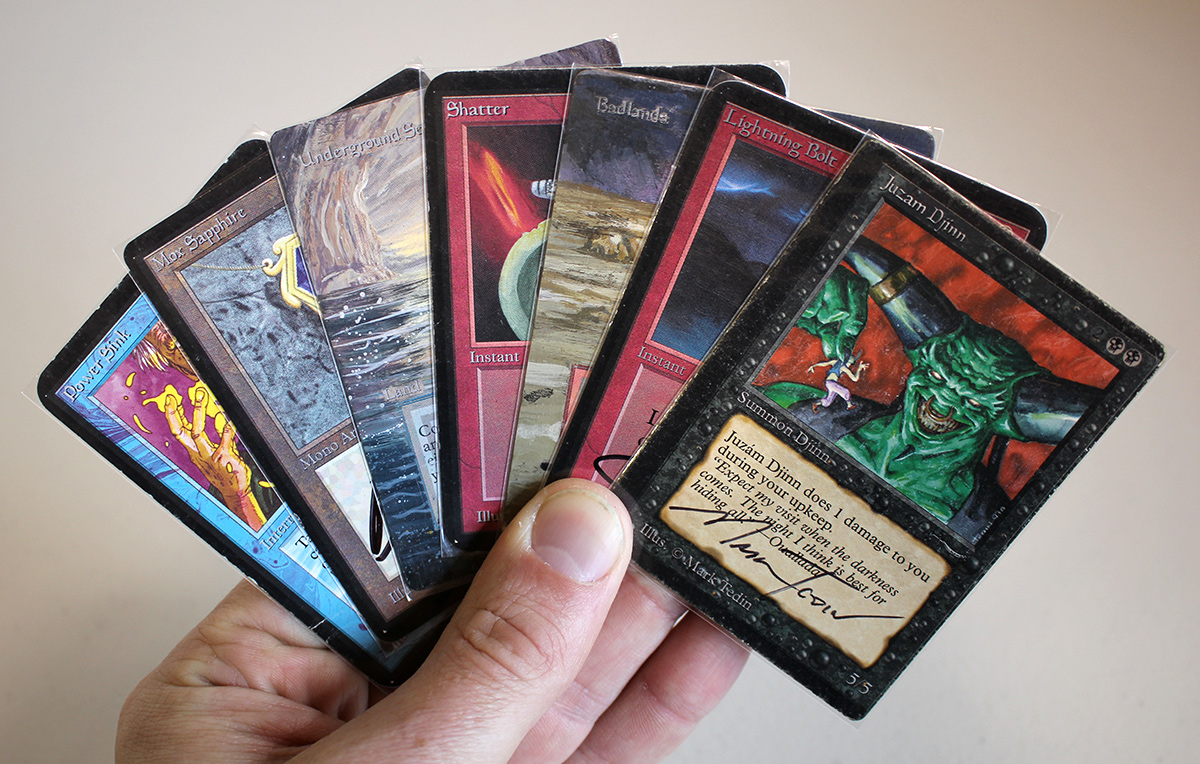
With all of our required mana, removal, and countermagic, this is a fine hand. We can counter or kill something on the first few turns, and draw in to more mana and gas to advance our game plan.
Opening Hand 4
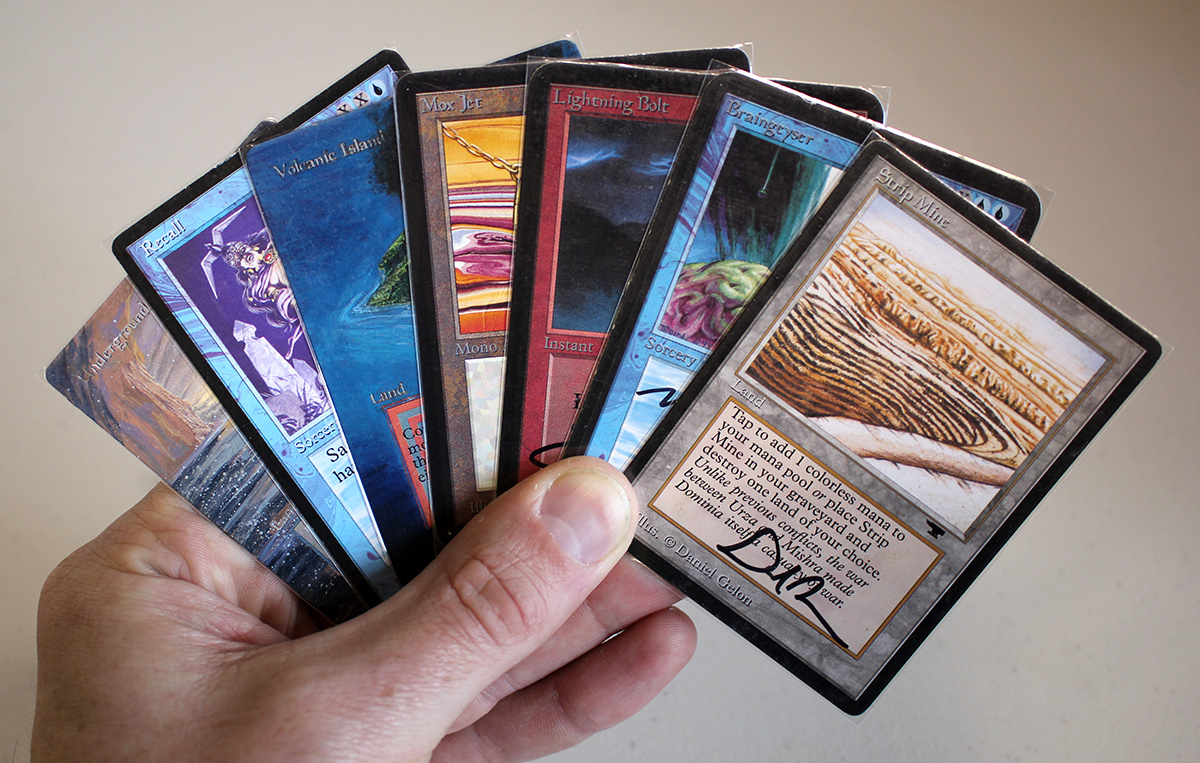
This hand has a mix of colors, mana, removal, and a draw spell, so it’s a pretty easy keep. More mana drawn in subsequent turns means a bigger Braingeyser in the mid-game, while more action spells means more things the opponent has to deal with in the interim.
Opening Hand 5
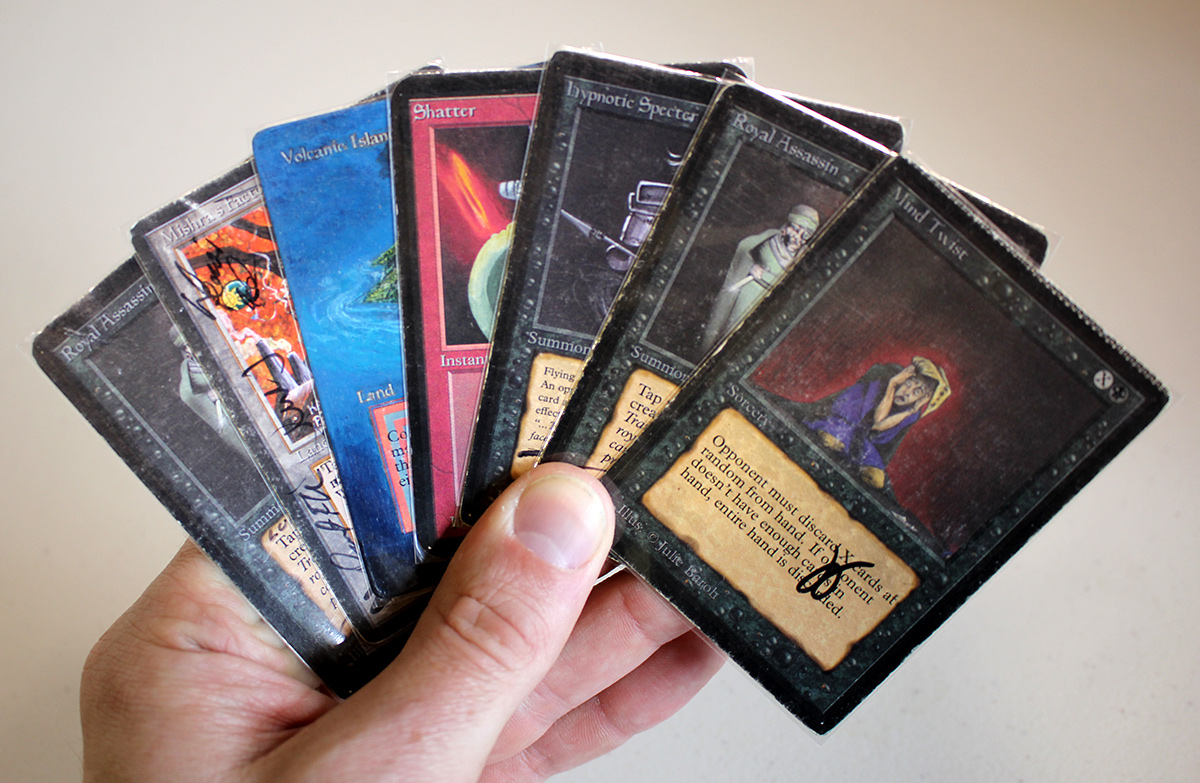
A lack of black mana, along with a host of black spells (including 3 with double black in the casting cost) make this a mulligan.
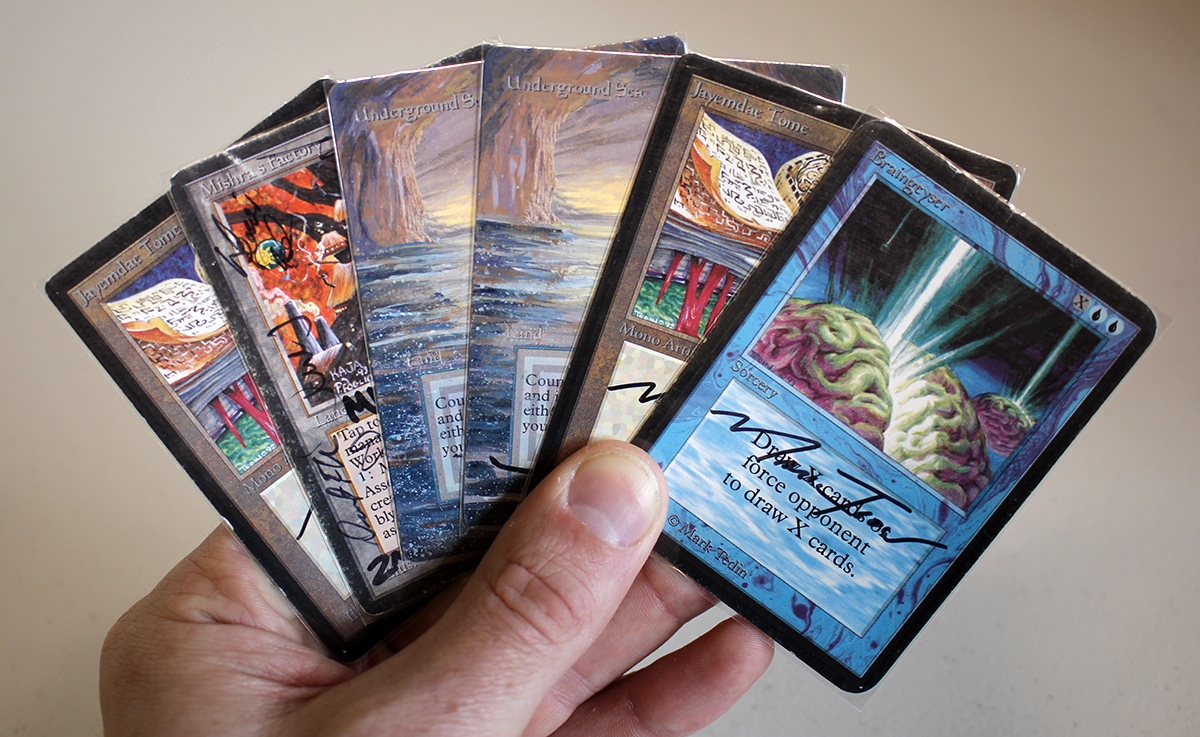
These six contain mana and action down the road, so it’s good enough to keep. We’ll need to find more mana to get Jayemdae Tome running, but this is a fine keep.
Opening Hand 6
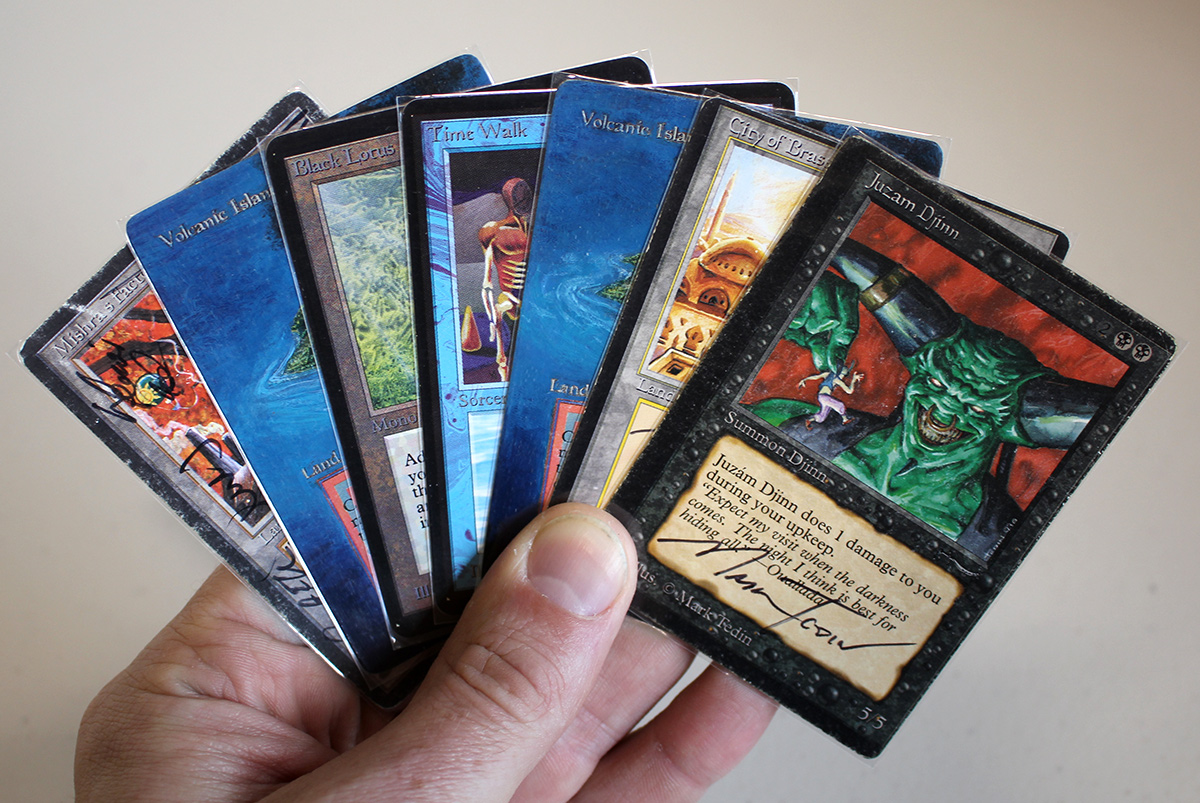
This hand represents a first turn Juzam Djinn, followed by a second turn Time Walk. I’d lead with Factory and Black Lotus in to Juzam, such that I could attack with Factory the following turn if Juzam gets removed, and if holding on to Time Walk for a future turn becomes a more optimal play.
Opening Hand 7
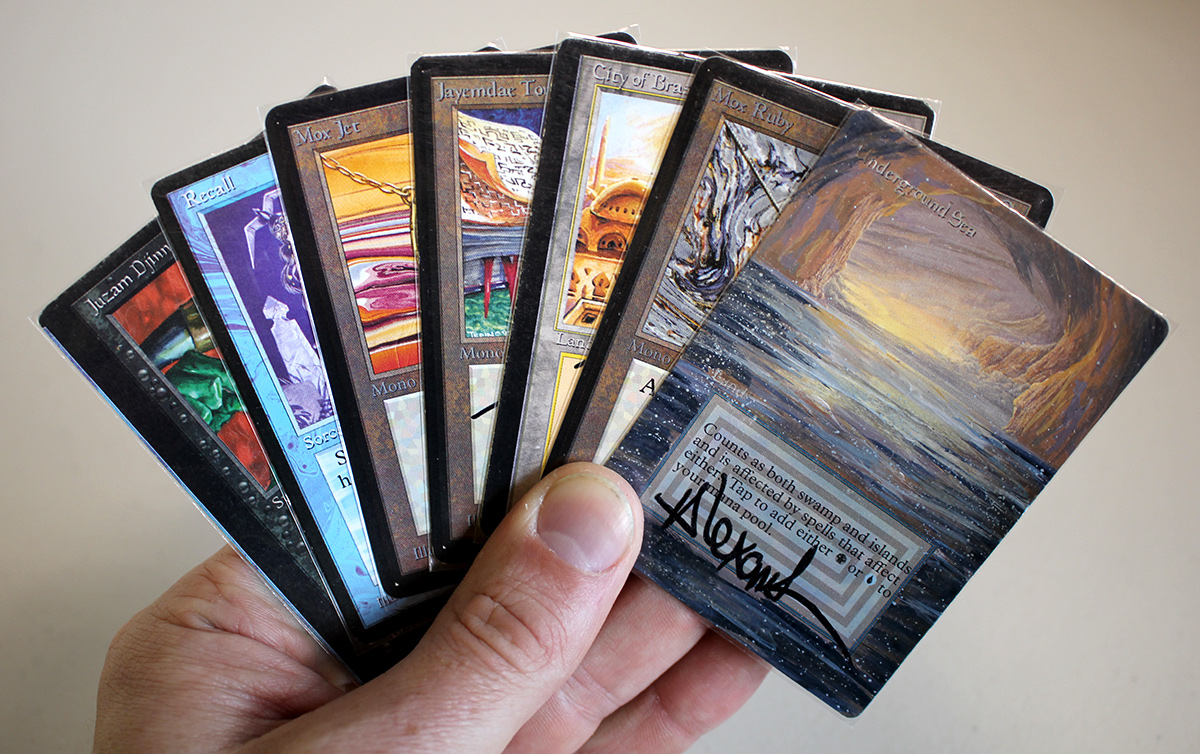
While we don’t have a first turn play, we do have plenty of mana, acceleration, and strong plays of Juzam Djinn or Jayemdae Tome on the second and third turns. This is a keeper, and I’d likely just lead off with Underground Sea and pass the turn, to withhold information from the opponent about what mana we have access to.
Opening Hand 8

Library of Alexandria, removal, Strip Mine, and blue mana make this a keeper. Recall can be used to reclaim Library should the opponent have a Strip Mine to answer, and you should be able to grind this game out that way.
Opening Hand 9
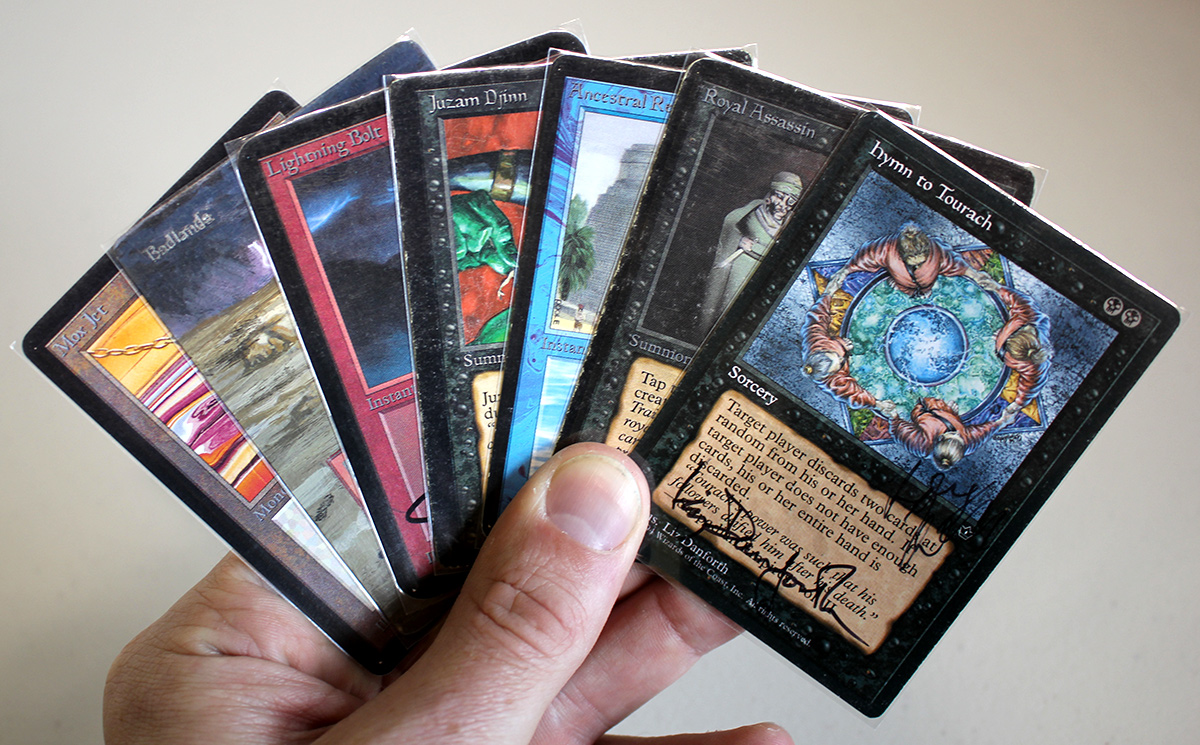
This hand features some powerful spells, but has dicey mana. The ability to cast a first turn Hymn to Tourach though, and later follow up with Ancestral Recall (once blue mana is found) is probably enough card advantage to win, even if we miss a land drop for a couple of turns, so I’d roll the dice and keep it.
Opening Hand 10

With Library of Alexandria, plenty of mana, and threats, this is another easy keep.
Concluding Thoughts
After having played Grixis variants a fair amount, I’m still undecided on the best direction for them. The versions with Hymn to Tourach (such as the one shown above) seem the most powerful against other blue decks, but the burn-heavy variants can often close the game out faster, and offer more in the way of removal against other small creature decks. Perhaps the best way may be to ditch all of the countermagic in the next version in favor of an even more low to the ground and faster tempo version, with more burn, and much cheaper creatures like Erg Raiders, topping out at three mana. More testing is needed, but I like the idea of a Grixis Zoo style deck.
Stay tuned to Eternal Central for more sick 93-94 brews all month long. Thanks for reading.

